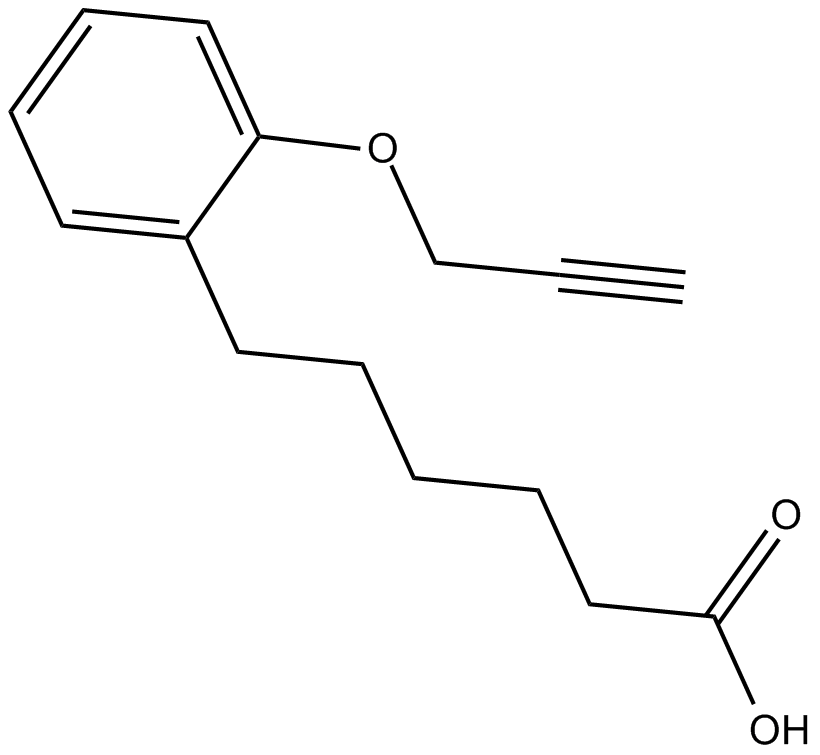PPOH |
| Katalog-Nr.GC14618 |
inhibitor of CYP epoxidase activity on arachadonic acid
Products are for research use only. Not for human use. We do not sell to patients.

Cas No.: 206052-01-9
Sample solution is provided at 25 µL, 10mM.
IC50: 9 μM for the formation of arachidonate 11,12 epoxides by CYP4A2 and CYP4A3 enzymes, respectively
PPOH is an inhibitor of CYP epoxidase activity on arachadonic acid.
Arachidonic acid can be converted by microsomal CYP450 enzymes to a variety of epoxides, ω-1 and ω-hydroxylated compounds through what is reported as the epoxidase pathway.
In vitro: A previous study found that the inhibition of the epoxygenase pathway with PPOH was able to enhance the microvascular response to increasing renal perfusion pressure. In the presence of 50 mM PPOH, afferent arteriolar diameter decreased by 29% when pressure was increased from 80-160 mmHg. In contrast, the selective CYT-P450 hydroxylase inhibitor, N-methylsulphonyl-12,12-dibromododec-11-enamide could attenuate the vascular response to increasing renal perfusion pressure [1]. In another study, it was shown that among the acetylenic compounds, both PPOH and N-methylsulfonyl-6-(2-propargyloxyphenyl)hexanamide were potent and selective inhibitors of microsomal epoxidation with IC50 values of 9 and 13 microM, respectively. Inhibition of microsomal activity by PPOH, but not DDMS, was time- and NADPH-dependent, which was a characteristic of a mechanism-based irreversible inhibitor [2].
In vivo: Up to now, there is no animal in vivo data reported.
Clinical trial: So far, no clinical study has been conducted.
References:
[1] Imig, J. D.,Falck, J.R., and Inscho, E.W. Contribution of cytochrome P450 epoxygenase and hydroxylase pathways to afferent arteriolar autoregulatory responsiveness. British Journal of Pharmacology 127, 1399-1405 (1999).
[2] Wang, M. H.,Brand-Schieber, E.,Zand, B.A., et al. Cytochrome P450-derived arachidonic acid metabolism in the rat kidney: Characterization of selective inhibitors. Journal of Pharmacology and Experimental Therapeutics 284(3), 966-973 (1998).
Average Rating: 5 (Based on Reviews and 18 reference(s) in Google Scholar.)
GLPBIO products are for RESEARCH USE ONLY. Please make sure your review or question is research based.
Required fields are marked with *




















